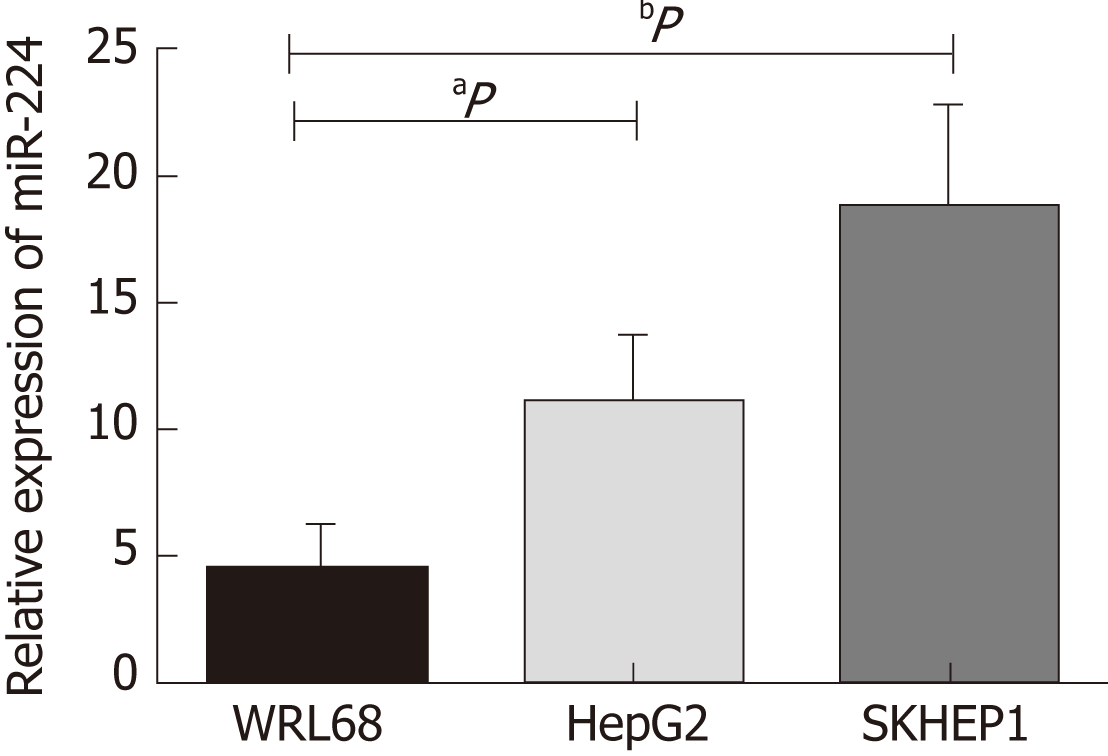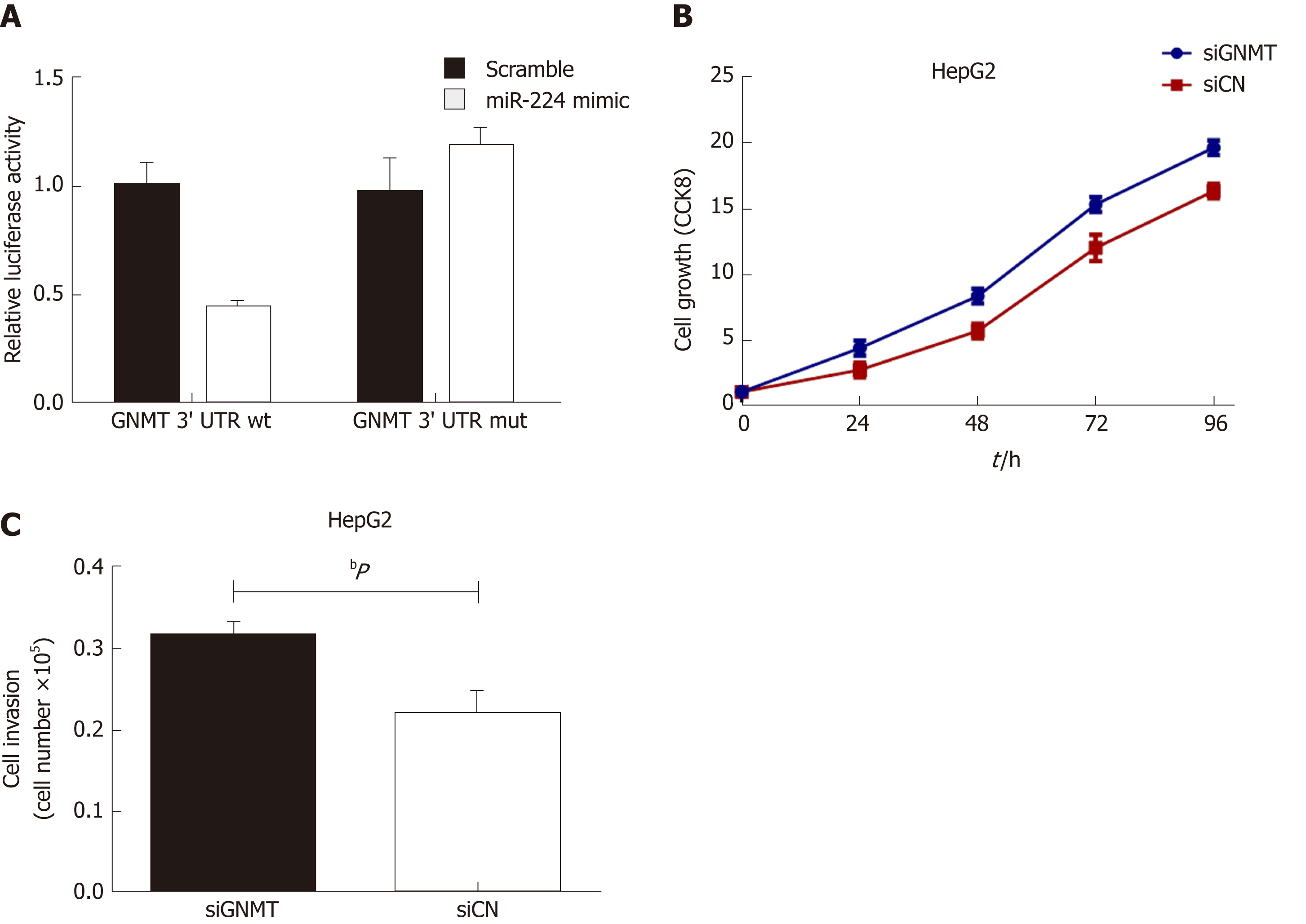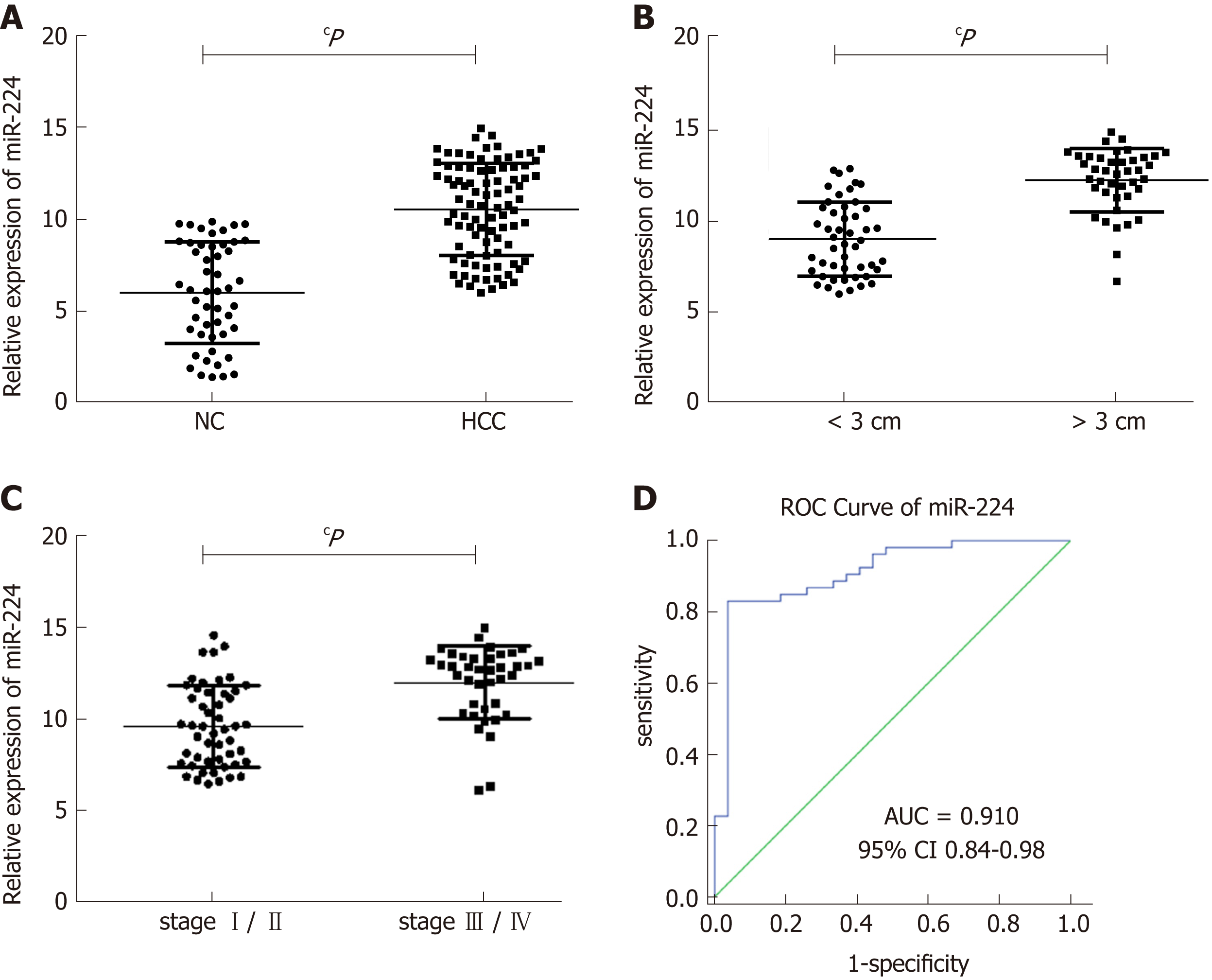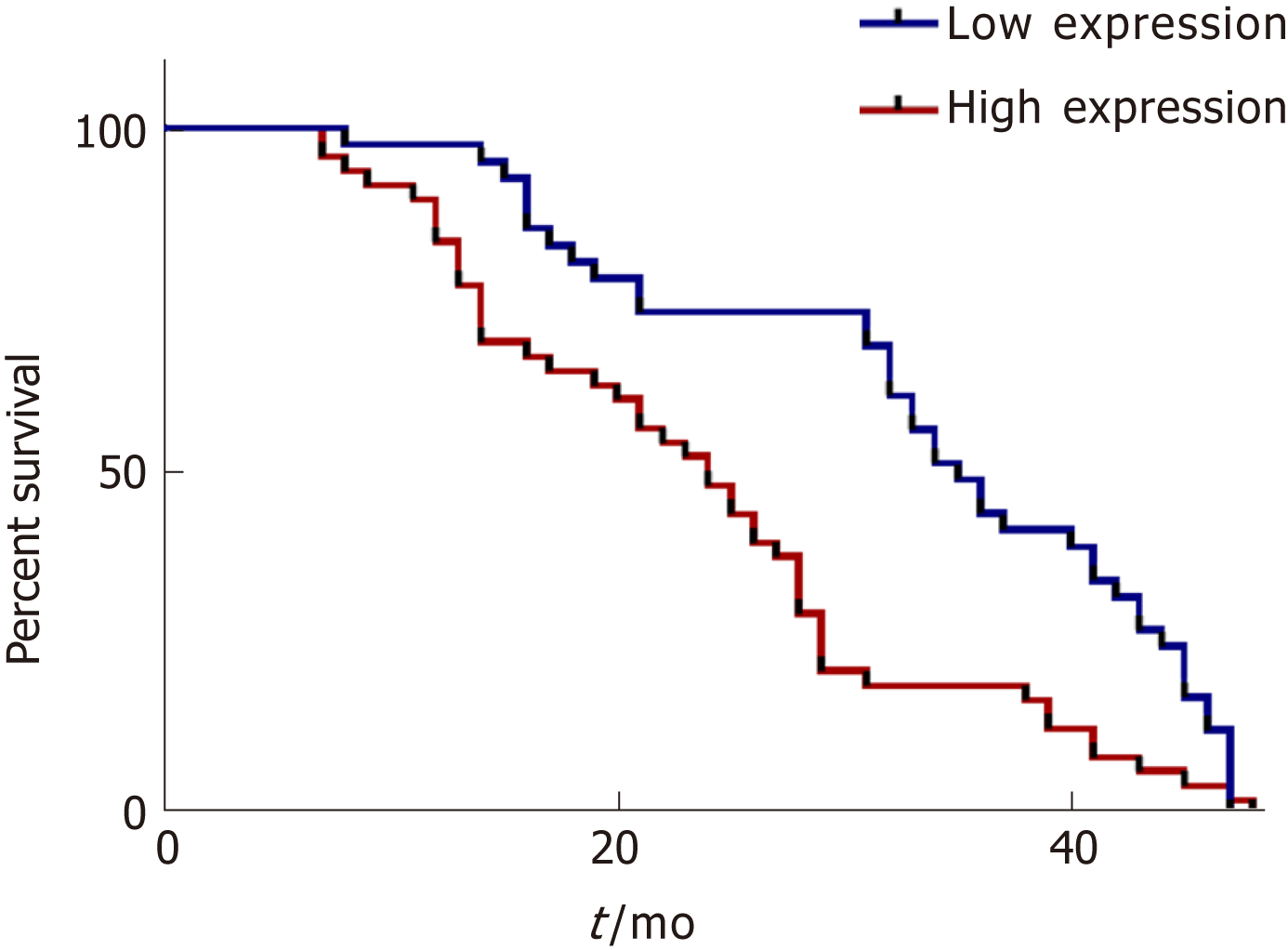Copyright
©The Author(s) 2019.
World J Gastroenterol. Apr 21, 2019; 25(15): 1890-1898
Published online Apr 21, 2019. doi: 10.3748/wjg.v25.i15.1890
Published online Apr 21, 2019. doi: 10.3748/wjg.v25.i15.1890
Figure 1 Relative expression of exosomal microRNA-224 in the hepatocellular carcinoma cell lines compared to that of the control.
aP < 0.05, bP < 0.01. miR-224: MicroRNA-224.
Figure 2 Exosomal microRNA-224 regulates hepatocellular carcinoma cell proliferation and invasion.
A and B: MicroRNA-224 (miR-224) promoted cell growth as measured by the Cell Counting Kit 8 assay in HepG2 and SKHEP1 cell lines. C and D: MiR-224 can promote cell invasion in HepG2 and SKHEP1 cell lines. aP < 0.05, bP < 0.01, cP < 0.001. CCK8: Cell Counting Kit 8; miR-224: MicroRNA-224.
Figure 3 MicroRNA-224 targets glycine N-methyltransferase.
A: MicroRNA-224 (MiR-224) mimic reduced the luciferase activity of cells transfected with the wild-type 3’-UTR but did not alter the luciferase activity of cells transfected with the mutant 3’-UTR. B: Si-glycine N-methyltransferase (siGNMT) can promote cell growth as measured by the Cell Counting Kit 8 assay in HepG2 cells. C: SiGNMT can promote cell invasion in HepG2 cells. bP < 0.01. CCK8: Cell Counting Kit 8; miR-224: MicroRNA-224; GNMT: Glycine N-methyltransferase.
Figure 4 Expression of serum exosomal microRNA-224 in hepatocellular carcinoma patients.
A: Relative expression of serum exosomal microRNA-224 (miR-224) in hepatocellular carcinoma (HCC) and normal controls. B and C: Relative expression of serum exosomal miR-224 in HCC patients based on tumor size and tumor stage. D: The receiver operating characteristic curve of miR-224 for diagnosing HCC. cP < 0.001. NC: Normal controls; HCC: Hepatocellular carcinoma; ROC: Receiver operating characteristic; AUC: Area under the curve; CI: Confidence interval; miR-224: MicroRNA-224.
Figure 5 Kaplan-Meier overall survival analysis of microRNA-224.
- Citation: Cui Y, Xu HF, Liu MY, Xu YJ, He JC, Zhou Y, Cang SD. Mechanism of exosomal microRNA-224 in development of hepatocellular carcinoma and its diagnostic and prognostic value. World J Gastroenterol 2019; 25(15): 1890-1898
- URL: https://www.wjgnet.com/1007-9327/full/v25/i15/1890.htm
- DOI: https://dx.doi.org/10.3748/wjg.v25.i15.1890













